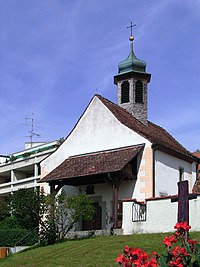Post exposure
When photographic materials are processed with the aid of a magnifier, the post-exposure process extends the exposure for certain areas of the image. Post-exposure in the photo laboratory usually takes place when exposing negative material ( photo paper ) and in this context has a darkening effect. The most common areas of application for this method are to improve the drawing of highlights or to darken the sky.
For post-exposure, the area that is not to be post-exposed is formed by hand or a cardboard in the beam path of the enlarger and the desired parts of the image are also exposed. The box is constantly moved to avoid sharp edges. The duration of the post-exposure is determined with the help of test strips .
The reverse process - the partial reduction of the amount of light on parts of the picture - is called dodging , holding back or holding back.
image editing
Modern image processing programs offer tools whose effects are based on the manual process of post-exposure and which enable partial darkening in digital image processing .
Example:

|

|
| normal | Post-exposed corners at the top |
